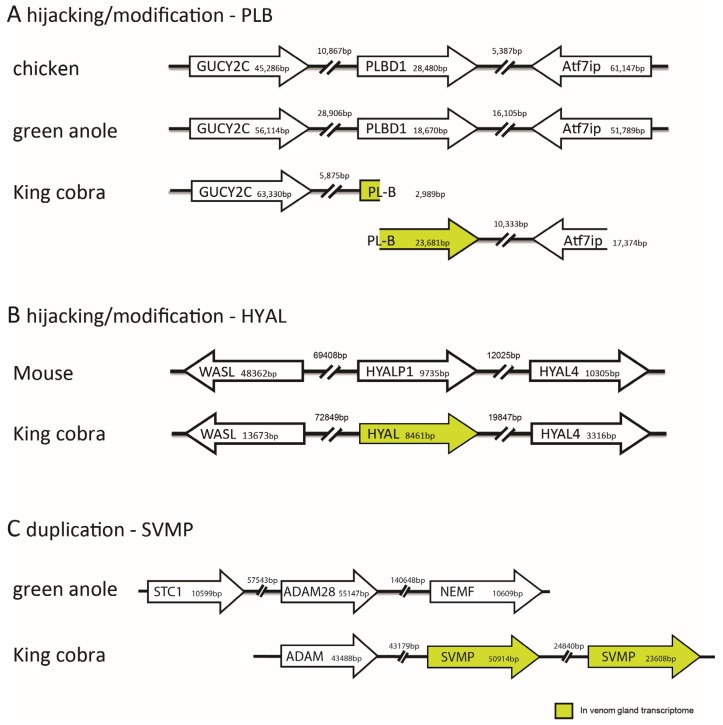Figure 1.
Syntenic comparisons of venom genes in the king cobra with other vertebrates revealing toxin recruitment by hijacking/modification and gene duplication. (A) Modification of PLBD1 gene found in the green anole lizard (Anolis carolinensis) and the chicken (Gallus gallus) results in the venom gland expressed phospholipase-B (PLB). Note that PLB is found split across two king cobra genome scaffolds; (B) Modification of HYALP1 gene found in the mouse (Mus musculus) results in the venom gland expressed hyaluronidase (HYAL); (C) Duplication of the non-venom gland expressed ADAM gene in the king cobra results in a venom gland expressed snake venom metalloproteinase (SVMP) gene. The ADAM gene in the green anole is flanked on both sides by non-SVMP genes, demonstrating the absence of gene duplication in this species. Note that subsequent downstream duplication of the SVMP gene in the king cobra results in multiple venom gland expressed SVMP isoforms. Based on Figure S5 from [3].

